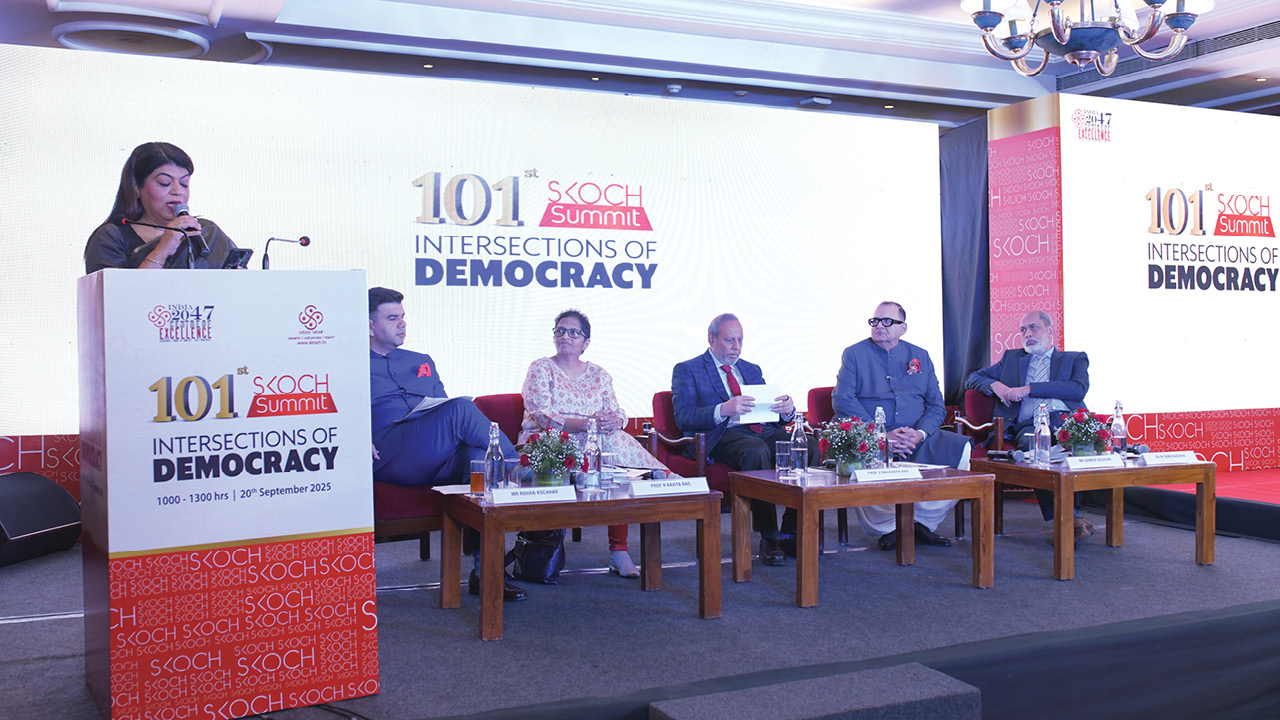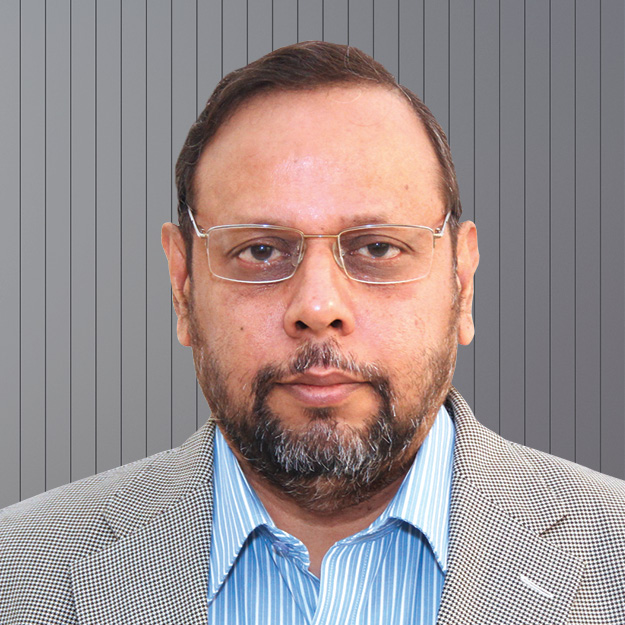Key Points*
- Democracy & Federalism as Pillars – India’s progress has been anchored in the twin constitutional principles of democracy and federalism, balancing unity with diversity.
- Vision of Viksit Bharat – Three core goals: (a) Economic growth to $30 trillion by 2047 with per capita income of $14,000–18,000; (b) Inclusive growth with quality employment and improved social indicators; (c) Sustainable growth with net zero emissions by 2070.
- States’ Critical Role – States account for 60% of public expenditure and are primary providers of essential services like health, education, infrastructure, and agriculture. Their transformation is key to India’s development.
- Growth Targets for 2047 – India aspires to reach a $30 trillion economy by 2047, with per capita incomes between $14,000–$18,000.
- Inclusive and Quality Employment – Employment generation, alongside improvements in social indicators like life expectancy, is vital for inclusive and equitable growth.
- Sustainability Commitments – India is committed to net-zero emissions by 2070, with milestones like achieving 50% renewable energy and promoting sustainable lifestyles.
- Addressing Regional Disparities – While economic disparities across states have widened, improvements in human development indicators like infant mortality and life expectancy show convergence.
- Fiscal Health of States – Strong fiscal management is critical. NITI Aayog’s Fiscal Health Index highlights Odisha, Chhattisgarh, Goa, Jharkhand, and Gujarat as top performers.
- Finance Commission’s Role – Finance Commissions remain the key institutions addressing inter-state inequalities by allocating more resources to less-developed states.
- Cooperative Federalism as the Way Forward – India’s path to becoming a developed nation requires vibrant democracy, cooperative federalism, decentralization, and healthy competition among states.
* This content is AI generated. It is suggested to read the full transcript for any furthur clarity.
Transcript
The distinguished panel members, Mr. Sameer Kochhar and all the participants. A very good morning to all of you. Let me first thank Mr. Sameer Kochhar and others from Skoch Foundation for inviting me for this function. You know, in my present position I can't give prescriptions so I can learn from them. What are the prescriptions from others. So I'll talk about briefly on regional disparities, finance and cooperative federalism. As you know, India's extraordinary progress over time has been shaped by two foundational constitutional principles. One is democracy, other is federalism. And our democratic institutions are very robust and for a long time. So democracy affords citizens the mechanisms for voice participation and accountability while federalism facilitates governance that is in tune with India's profound diversity. So this diversity we all know that cuts across linguistic, cultural, ethnic and socio-economic variations across 28 states and eight union territories leading to a governance model that balances unity with autonomy.
Regarding Viksit Bharat, as I already mentioned, you know we have three goals of Viksit Bharat. It's not just growth. Growth is one of the things in growth, of course we have to get $30 trillion by 2047 and the estimates per capita varies from 14,000 to $18,000 there. I think state's role in growth is important. In fact many of the states are announcing the, you know, by 2030 or 2047 their goals. Andhra Pradesh, Telangana and other UP, Tamil Nadu all announced the goals for the Viksit Bharat or even before by 2030 thing. So state's role is important. Similarly the inclusive growth, the second goal of Viksit Bharat where we have to achieve several indicators mentioned earlier in the social sector and of course inclusive growth. Employment is one of the most important things for quality. Employment is important. Similarly the social sector mentioned the life expectancy, several things we have to achieve. And third of course is the sustainability because that's also becoming an important one. How do you have development with sustainable goals? The Prime Minister has announced net zero emissions by 2070. And then we already achieved this renewable energy by 50% of that. And also he also said lifestyle for environment is also important from the individual point of view. So three are important. And states play an important role in achieving these goals.
And then I'll speak about because states spend 60% of the public expenditure and they deliver essential services including education, health, infrastructure, skill development, agriculture and urban administrations. So in essence India's essential developed status is linked to the transformation of each state into a robust engine of growth, inclusive growth and sustainable growth. As already mentioned, India's federal framework over time, 1950s to 1970s and also with the economic reforms states’ role also became more important in inviting investment, FDI as well as the domestic investment. And later of course the finance commissions also increased the share to 42%. The 14th Finance Commission and GST Council etc. And also the replacement of the Planning Commission with NITI Aayog in 2015 was intended to advance this cooperative federalism. Because shifting from top-down approach to the, you know, collaboration with the state governments and these institutional evolutions over time particularly NITI Aayog and others reflects India's federal democracy.
Now I come to the, you know, regional disparities because to know about this you need, for framing appropriate policies, you need to know what are the regional disparities. So the existence of wide inter-regional variations in a vast country like India is well recognized. It's a diverse country. There are so many regional disparities. So all the Five Year Plans earlier in the Planning Commission they talked about this. And now NITI Aayog also doing lots of studies at state level. It's a serious issue, regional disparities. In the post-reform period, of course the central government role declined because of deregulation in many sectors of the economy, more private sector played an important role. And the empirical evidence shows that interstate disparities in per capita GSDP have increased over time. That means rich states are growing faster whereas some of the states are growing, other states like Bihar and others are growing but not at the same pace. So there is a divergence in the inter-regional disparities. But in human development there is a decline in disparities like life expectancy, infant mortality. But that is expected because the less developed states will catch up with developed states like Bihar catching up with Kerala in infant mortality or life expectancy. So that's expected. Moreover, many of the poorer states could contribute more to economic development because of demographic dividend, because some of the states like Bihar, UP and others will have more advantage later. For example, the old age population in Kerala will be 17% by 2036 but in Bihar it will be 8%. So that has more advantage in demographic dividend.
A study done by the Economic Advisory Council to the Prime Minister shows they did the relative performance of states from 1960-61 to 2023-24. It shows some interesting results. As expected, western states like Maharashtra, Gujarat, Goa and southern states have improved their positions. But in the north there is a difference between Punjab and Haryana performance. Haryana has done better than Punjab in relative status. In the east, West Bengal has experienced a decline but Bihar, although there is increase in the share, still the per capita income is very low compared to other states. Hopefully it will catch up. But one state, Odisha, has done very well in the last few years in the eastern region.
In fact, recently NITI Aayog brought out Fiscal Health Index. All of you know it, 2025. The analysis clearly highlights strong revenue mobilization, effective expenditure management and prudent fiscal practices are critical determinants of success. The top performing states are Odisha, Chhattisgarh, Goa, Jharkhand and Gujarat in the Fiscal Health Index while the bottom five which the NITI Aayog calls aspirational states are Haryana, Kerala, West Bengal, Andhra Pradesh and Punjab. But of course Andhra Pradesh data refers to the earlier regime. However, the states’ performance varies across the five subcategories in the fiscal index. So fiscal health of states is emerging as a critical factor in shaping India's overall economic stability and growth trajectory. However, rising fiscal deficits, unbalanced expenditure and increasing off-budget liabilities at the state level highlight the urgent need for consistent and transparent fiscal management policies. So thus strengthening state finances is vital for ensuring stable economic growth and achieving Viksit Bharat goals.
Turning to Finance Commissions, they determine as mentioned their vertical share and horizontal shares. The horizontal distribution formula of the Finance Commission is an important instrument for tackling inequalities across states. In fact, in one of his articles on interstate inequalities, Dr. Y.V. Reddy, the former RBI Governor, indicated that except the Finance Commission, all other public institutions did not focus on the inequalities among states. Even the earlier Planning Commissions’ per capita outlays were higher for richer states. Even centrally sponsored schemes required matching contributions from states and even private capital, private investment. And all richer states attract even the external market borrowings. And even central tax concessions also tend to be regressive. Thus, except the Finance Commission which takes into account the inequalities, others have not taken into account. And as mentioned, you know, 12th Finance Commission to 14th, 15th Finance Commission if you see the data, again the comparable data of states show that there is increase in the disparities. So in the formula we all know Finance Commissions’ per capita income distance is the most important indicator for tackling income disparities across states. So why this per capita income? Because the important idea is income distance is important because backward states also should get more funds in order to improve their health, education, water, sanitation, etc. So based on the formula, less developed states should get more funds. But the richer and high performing states complain obviously they are being penalized for performance because we are performing well, we are getting less funds. So the Finance Commission generally balances between these two viewpoints.
I mean I can't go into the 16th Finance Commission, what they are going to do and all now. So what are the determinants of economic growth across states? There have been a number of studies examining these determinants. Studies show that infrastructure development, social sector expenditure, credit-deposit ratio, urbanization, all these are important.
So to conclude, India is now aspiring to achieve the status of a developed nation by 2047 with inclusive development at the 100th anniversary of independence. And the role of states in this journey is equally crucial if India wants to become a developed country. In a vast country like India, inter-regional disparities are expected. In fact, one of the British economists Joan Robinson once said, whatever you can rightly say about India in one part of the country, the opposite is also true in another part of the country. Because if you say something on Kerala, the opposite may be true of what you say in Punjab. So this diversity is there. So it is the healthiest sign. States are competing by announcing goals of an SDP thing. Lastly, also decentralization may be needed within states like getting to Panchayats, municipal councils and other things. So the last point is the experience of GST reform and GST Council shows an important example of cooperative federalism which Mr. Kochhar also mentioned. So to end, it may be noted that vibrant democracy and strengthened cooperative federalism are very important for achieving our Viksit Bharat. Thank you very much.

